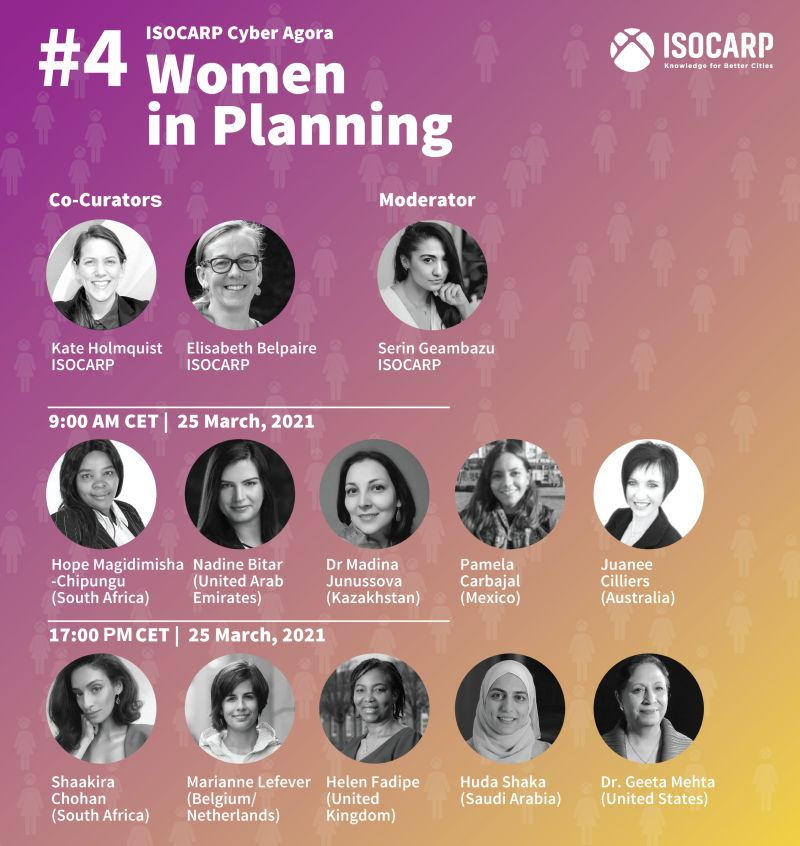Women in Urban Plannig
- Pamela Carbajal
- 26 mar 2021
- 3 Min. de lectura
Actualizado: 31 mar 2021
MARCH 25, 2021
The International Society of City and Regional Planners - ISOCARP organized the 4th Cyber Agora 'Women in Planning'. Which had a wonderfully diverse panel of 10 women Planning & Placemaking leaders sharing authentic experiences and insights from across the globe, followed by an open Agora discussion. I had the pleasure and honor to take part of the discussions as a young professional.
[To watch the event follow the link: https://isocarp.org/about-cyber-agora/isocarp-cyber-agora-women-in-planning/recordings-and-notes-from-the-events/]
The follow text is what I shared over few minutes I had to introduce myself and my experiences:
My professional journey started when I moved (alone) from my home town “Chihuahua” to Mexico city to conclude my architecture studies at the Technologic de Monterrey University. When I landed into Mexico City I felt so insecure, lost and even regrated my moved. It was a completely new setting and totally different from my hometown. While, I was looking an apartment and choosing the right neighborhood. I put myself a set of priorities: I wanted to feel safe, free, empowered, protected and more important, I wanted to be able to grow.
Then, I started working at the Public Space Authority of Mexico city. I really wanted to have an impact in the city I was living. At the Authority, I had the opportunity not only to design and supervise construction of public spaces around the city. But I also had the opportunity to print my needs, feelings and priorities into the urban design.
[The public space Authority office closed in 2019. For more information about my involvement in the Authority you can visit my “work” page and for more information about the authority you can visit https://www.seduvi.cdmx.gob.mx/comunicacion/nota/se-extingue-la-aep]
Now I understand how privileged I was to be able to bring my needs into the design of public spaces in the city I was living in. It changed the way I looked at the city and also gave a huge sense of belonging in this city where I used to feel insecure. And that is something every young woman that is growing and shaping herself should feel about the city they are living in: A safe place where they can be the best version of themselves.
As I moved forward in my career, into Urban and Territorial Planning and Urban Policies. I re-shaped my thoughts, I deepen my knowledge and took my principles from urban design to policy making which added a whole new perspective and considerations such as “Right to housing and land”, “Right to education and participation processes”
Along, my experience as a territorial planner, I had supported different countries on their development of urban policies, and in particular, I supported Bolivia on the development of their socially inclusive urban policy. This opens my eyes and switches my needs to opportunities women bring to urban development. To conclude I want to share 2 main take-ups a ways from this experience.
1) Women are an economic engine of cities and social development;
2) Women are promoters of social and community cohesion within cities.
[For more information about my work on Socially Inclusive Urban Policices you can visit https://pamelacarbajal.wixsite.com/pamelacarbajal/inlcusion-social]

Personal event take aways: The event was a great opportunity to discuss about the obstacles women face while working in planning, and how can there be more opportunities for young women planners to gain experience in the planning field, or attract young women to planning.
MORE RESOURCES
UN-Habitat (the United Nations Human Settlements Programme) and the independent think tank Global Utmaning (Global Challenge) has just recetly launched HER CITY TOOL BOX.
HER CITY TOOL BOX. The purpose of this initiative is to make methods and tools available to urban actors and cities globally. We support cities to scale up and mainstream girls’ participation in planning as a part of their long-term strategies to build sustainable cities and societies.


















Comments